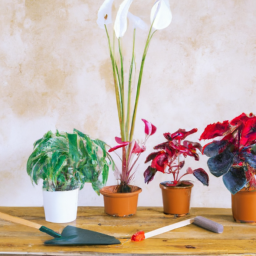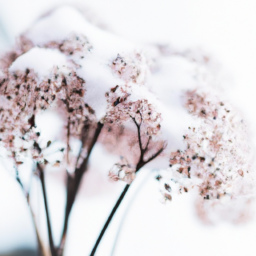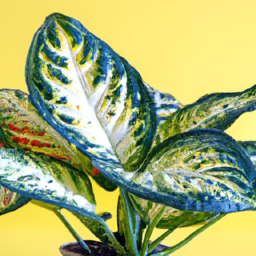
As the winter season approaches, many of us find ourselves spending more time indoors. One way to brighten up our living spaces and bring a touch of nature inside is by incorporating indoor plants. In this blog post, we will explore the best indoor plants for winter, highlighting their ability to thrive in low light conditions and withstand the dry air typically found in heated indoor environments. Whether you’re a seasoned plant parent or looking to add some greenery to your home for the first time, these winter-friendly plants are sure to bring some life and color to your space during the colder months.
Top 10 Best Indoor Plants for Winter
Winter can be a tough time for plants, especially indoor ones. The lack of sunlight and dry air can make it challenging for them to thrive. However, there are certain plants that are well-suited for the winter months and can brighten up your home during the cold season. In this guide, we will explore the top 10 best indoor plants for winter that are easy to care for and will add a touch of greenery to your space.
1. Peace Lily
The peace lily is a popular choice for indoor plants, especially during the winter months. It is known for its beautiful white flowers and dark green leaves. Peace lilies are relatively low-maintenance and can thrive in low light conditions, making them perfect for the winter season. They also help purify the air, making them a great addition to any home.
When caring for a peace lily in winter, make sure to keep the soil moist but not waterlogged. Water the plant when the top inch of soil is dry, and mist the leaves occasionally to increase humidity. Place the peace lily in a bright, indirect light spot to ensure it continues to bloom throughout the winter.
Another benefit of peace lilies is that they are pet-friendly, so you don’t have to worry about any harm coming to your furry friends if they decide to nibble on the leaves.
2. Spider Plant
Spider plants are another excellent choice for indoor plants during the winter months. They are easy to care for and can tolerate a wide range of conditions, making them ideal for beginners or those with a busy schedule. Spider plants have long, arching leaves with small white flowers that add a touch of elegance to any space.
To care for a spider plant in winter, make sure to water it regularly but allow the soil to dry out between waterings. Spider plants prefer bright, indirect light but can also tolerate low light conditions. They are also excellent air purifiers, making them a healthy addition to your home during the winter months.
One unique feature of spider plants is their ability to produce “babies” or offshoots, which can be propagated to create new plants. This makes spider plants a great option for those looking to expand their indoor plant collection without having to purchase new plants.
3. Aloe Vera
Aloe vera is a popular succulent plant known for its medicinal properties and easy care requirements. It is a hardy plant that can thrive in the dry, indoor air of winter. Aloe vera plants have thick, fleshy leaves that contain a gel-like substance with various health benefits, including soothing sunburns and moisturizing skin.
To care for an aloe vera plant in winter, make sure to place it in a sunny spot where it can receive at least six hours of indirect sunlight per day. Water the plant sparingly, allowing the soil to dry out completely between waterings. Aloe vera plants prefer well-draining soil to prevent root rot, especially during the winter months when they are more susceptible to overwatering.
One of the benefits of growing aloe vera indoors is that it can help improve indoor air quality by removing harmful toxins from the air. This makes it an excellent choice for those looking to create a healthy environment in their home during the winter season.
In conclusion, these are just a few of the best indoor plants for winter that can thrive in the challenging conditions of the season. By choosing the right plants and providing them with the care they need, you can enjoy a touch of greenery and beauty in your home all year round. So why not add some of these plants to your indoor garden this winter and brighten up your space with their vibrant colors and lush foliage?
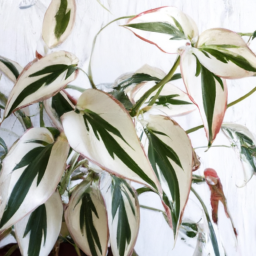
Benefits of Having Indoor Plants During the Winter Months
Improved Air Quality
During the winter months, when we spend more time indoors with the windows closed, the air quality in our homes can suffer. Indoor plants can help improve air quality by absorbing toxins and releasing oxygen through the process of photosynthesis. Plants such as spider plants, peace lilies, and snake plants are known for their air-purifying properties. By having these plants in your home, you can breathe easier and feel more refreshed.
In addition to removing toxins from the air, indoor plants can also help increase humidity levels in your home. This is especially beneficial during the winter when the air tends to be drier due to heating systems. Plants release moisture through a process called transpiration, which can help combat dry skin, respiratory issues, and static electricity.
Furthermore, studies have shown that indoor plants can help reduce stress and anxiety levels. The presence of greenery in your home can have a calming effect on your mind and body, making you feel more relaxed and at ease. This can be particularly helpful during the winter months when seasonal affective disorder (SAD) is more common.
Boosted Mood and Productivity
Having indoor plants during the winter months can also have a positive impact on your mood and productivity. Research has shown that being surrounded by plants can help reduce feelings of depression and increase feelings of happiness and well-being. The color green is often associated with nature and growth, which can have a psychologically uplifting effect.
In addition, caring for indoor plants can provide a sense of purpose and accomplishment, which can boost self-esteem and motivation. The act of tending to plants, watering them, and watching them grow can be a rewarding experience that gives you a sense of fulfillment. This can be especially important during the winter when outdoor activities may be limited.
Furthermore, having indoor plants in your workspace can help improve productivity and creativity. Studies have shown that plants can help reduce stress and fatigue, leading to increased focus and concentration. The presence of plants in your home office or work environment can create a more positive and inspiring atmosphere that encourages innovation and problem-solving.
Natural Decor and Aesthetics
Indoor plants can also serve as natural decor and enhance the aesthetics of your home during the winter months. Plants come in a variety of shapes, sizes, and colors, allowing you to create a personalized and inviting space. Whether you prefer lush foliage, colorful flowers, or unique succulents, there is a plant to suit every style and preference.
In addition to adding beauty to your home, indoor plants can also help create a sense of tranquility and harmony. The presence of plants can soften harsh lines, absorb sound, and create a more welcoming atmosphere. Whether you place plants on shelves, tables, or hanging planters, they can bring life and energy to any room.
Furthermore, indoor plants can be used to create focal points and draw attention to specific areas of your home. Whether you choose to display a large statement plant or group several smaller plants together, you can create visual interest and elevate the overall design of your space. Plants can be used to add texture, height, and movement to your decor, creating a dynamic and inviting environment.
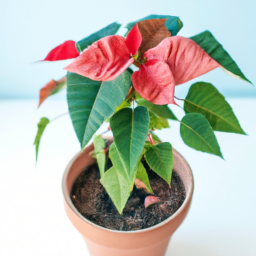
Tips for Caring for Indoor Plants in the Winter
Understanding Your Indoor Plants’ Needs
During the winter months, indoor plants require special care to thrive in the colder, darker conditions. Understanding your plants’ individual needs is crucial to ensuring they stay healthy and vibrant throughout the season.
First and foremost, it’s important to consider the type of plant you have and its specific requirements. Some plants, such as succulents and cacti, thrive in dry conditions and may not need as much water during the winter. On the other hand, tropical plants may require more humidity to thrive.
In addition to water and humidity levels, it’s essential to consider the amount of light your plants are receiving. With shorter days and less sunlight during the winter, you may need to move your plants closer to a window or provide supplemental grow lights to ensure they are getting enough light to photosynthesize effectively.
Lastly, be mindful of the temperature in your home during the winter months. Most indoor plants prefer temperatures between 65-75 degrees Fahrenheit during the day and slightly cooler temperatures at night. Avoid placing your plants near drafty windows or heat sources, as extreme temperature fluctuations can stress your plants.
Watering Your Indoor Plants
One of the most common mistakes people make when caring for indoor plants in the winter is overwatering. With lower light levels and cooler temperatures, plants may not be actively growing and therefore require less water than they do during the warmer months.
To determine if your plants need water, check the soil moisture level by sticking your finger into the soil. If the top inch of soil feels dry to the touch, it’s time to water your plants. Be sure to water your plants thoroughly, allowing water to drain out of the bottom of the pot to prevent root rot.
It’s also important to use room temperature water when watering your plants, as cold water can shock the roots. If your plants are sensitive to fluoride or chlorine in tap water, consider using distilled water or allowing tap water to sit out overnight to allow the chemicals to dissipate.
If you’re unsure about how much water your plants need, err on the side of underwatering rather than overwatering. It’s easier to revive a slightly dehydrated plant than one that has been overwatered and is suffering from root rot.
Providing Adequate Humidity and Light
During the winter months, the air in your home can become dry due to heating systems running constantly. This lack of humidity can be detrimental to many indoor plants, especially tropical varieties that thrive in high humidity environments.
To increase humidity levels around your plants, consider placing a humidifier nearby or grouping your plants together to create a microclimate of higher humidity. You can also mist your plants with a spray bottle filled with water to add moisture to the air around them.
In addition to humidity, ensuring your plants are receiving enough light is crucial to their overall health and growth. If your plants are not getting sufficient natural light, consider investing in a grow light to supplement their light needs. Position the grow light a few inches above your plants and set it on a timer to mimic natural daylight hours.
By understanding your indoor plants’ needs, adjusting your watering routine, and providing adequate humidity and light, you can help your plants thrive during the winter months. With a little extra care and attention, your indoor garden can continue to bring joy and beauty to your home all year round.
In Summary
As the winter season approaches, many of us are looking for ways to bring a little bit of greenery and life into our homes. One of the best ways to do this is by adding indoor plants to our living spaces. Not only do indoor plants add a pop of color and beauty to our homes, but they also help improve air quality and boost our mood during the cold, dreary winter months.
Some of the best indoor plants to consider for the winter season include the resilient snake plant, which requires minimal care and can thrive in low light conditions. The peace lily is another great option, as it not only adds a touch of elegance to any room but also helps purify the air. For those looking for a pop of color, the vibrant African violet is a perfect choice, as it blooms in a variety of shades and can brighten up any space. No matter your style or space limitations, there is an indoor plant out there that is perfect for bringing some warmth and life into your home this winter.
Frequently Asked Questions (FAQ):
Q1. What are the best indoor plants for winter?
A1. Some of the best indoor plants for winter include peace lilies, snake plants, spider plants, pothos, and ZZ plants. These plants are known for their ability to thrive in indoor environments with less sunlight and lower temperatures.
Q2. How can I care for indoor plants during the winter months?
A2. To care for indoor plants during the winter months, make sure to place them in well-lit areas where they can still receive some sunlight. Avoid placing them near drafty windows or heaters, as this can cause stress to the plants. Water your plants less frequently in the winter, as they require less water during this time.
Q3. Can indoor plants help improve air quality during winter?
A3. Yes, indoor plants can help improve air quality during winter by removing toxins from the air and releasing oxygen. Plants like peace lilies, spider plants, and snake plants are known for their air-purifying properties, making them great additions to your indoor space during the winter months.
Q4. Are there any indoor plants that bloom during winter?
A4. Yes, there are indoor plants that bloom during winter, such as the Christmas cactus, amaryllis, and orchids. These plants can add a pop of color to your indoor space during the colder months and brighten up your home during the winter season.
Q5. How can I prevent my indoor plants from getting pests during winter?
A5. To prevent pests from infesting your indoor plants during winter, make sure to regularly inspect your plants for any signs of pests such as webs, holes, or sticky residue. You can also wipe down the leaves of your plants with a mild soap solution to help deter pests. Additionally, avoid overwatering your plants, as this can create a hospitable environment for pests to thrive.

James Wong is a renowned ethnobotanist, plant scientist, and local television presenter. With a passion for demystifying plant science, he is known for translating complex botanical concepts into practical advice for everyday plant enthusiasts. James’s expertise spans from traditional gardening to cutting-edge plant technologies, making his insights accessible and informative.

